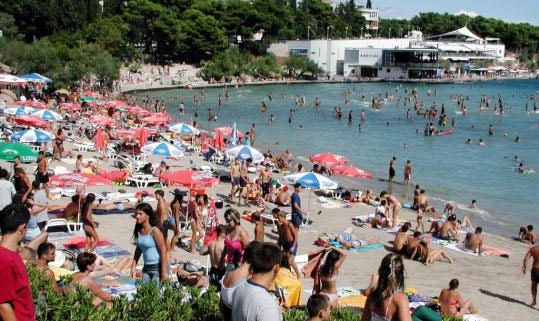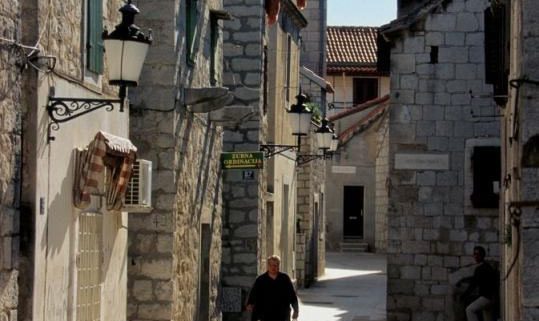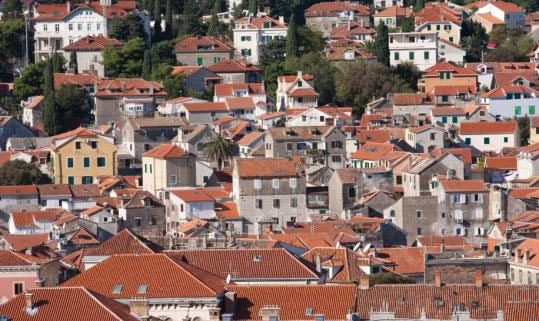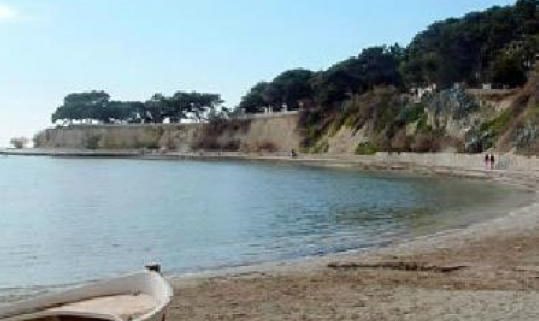Cities districts

Bačvice
“We are going to Bačvice…”, is tune often heard around the town, words of a joyous hymn to the municipal beach, officially designated as such in 1919.
Bačvice is a phenomenon of nature, a sandy beach at the heart of the city, in the vicinity of the city harbor, and it can accommodate over ten thousand people. During the low tides in springtime Bačvice turn into a split version of Copacabana where many famous soccer players first displayed their talent, where the rugby in Split was born, where even in wintertime a unique game of “picigin” is played (a sort of volleyball, played in the sea shallows with a small ball).
Bačvice today represents a best known promenade for all generations, and during nighttime is the favorite center of nightlife.


Radunica
Radun is an ancient Illyrian name for a water spring. Since day one Radunica was the main street of Lučac where, some five hundred years ago, old citizens of Split gathered while arriving from the Republic of Poljica. The streets were named after their surnames: Kuzmanić, Ninčivić, Kuzmić, Ružić, Bubalo, Trumbić, Duplančić, Dumanić, Petrić, Prvan, Vešanović, Dvornik, Čulič, and so on. Radunica became even more famous with its festivities during the Days of Radunica, traditionally happening in the last week of June, around St. Peters day.


Veli Varoš
Veli Varoš and Lučac keep the Split city core in a “historical sandwich”, competing for the title of the oldest suburbs. Citizens of Lučac boast with the ancient Illyrian toponym Radunice, while the citizens of Veli Varoš stress their ancientness climbing the Marjan hill above.
Veli Varoš abounds with well preserved local architecture and original local ambient. Walking uphill in Veli Varoš should be repeated couple of times in order to perceive the remainder of the games stones play up the steep streets and in order to catch all the details while looking over the rooftops from the Prva Vidilica (First Peak).
Among the best known architectural monuments the most famous is the Church of St. Mikula from the 11th century, on the lintel above the facade, next to the images of lionesses is the name of the citizen Ivan and his wife Tiha.
Let us mention once again also the churches that adorn Veli Varoš, church of Our Lady of Soca, the Holy Cross and St. Francis. Veli Varoš has been, until recently, the symbol of fishermen from Split who lived poorly of their daily sardines (Spli’ski akvarel, musical by Ivo Tijardović), while today real-estate prices in this part of the city have gone through the roof.
Many famous opera singers came from Veli Varoš, like Noa Matošić, Ante Marušić and Ratomir Kliškić, as well as Miljenko Smoje, the famous journalist and publicist.


Firule
Nobody has the lungomare, a promenade by the sea, like Split!
From the point of Marjan and the Oceanographic institute you can take a stroll along the sea all to the eastern marine city limits like: Bačvice, Ovčice, Firule, Zenta, Trstenik, Duilovo…
Because of its fine sand and natural shelter Firule have always proven to be especially interesting for mothers with young children.
A recreational pilgrimage to Firule grew more popular as the tennis center was organized here.
Nikola Pilić, Željko Franulović, Goran Ivaniševic learned their first serves here as well as Mario Ančić and Jelena Kostanić.


 English
English Hrvatski
Hrvatski Deutsch
Deutsch Italiano
Italiano



